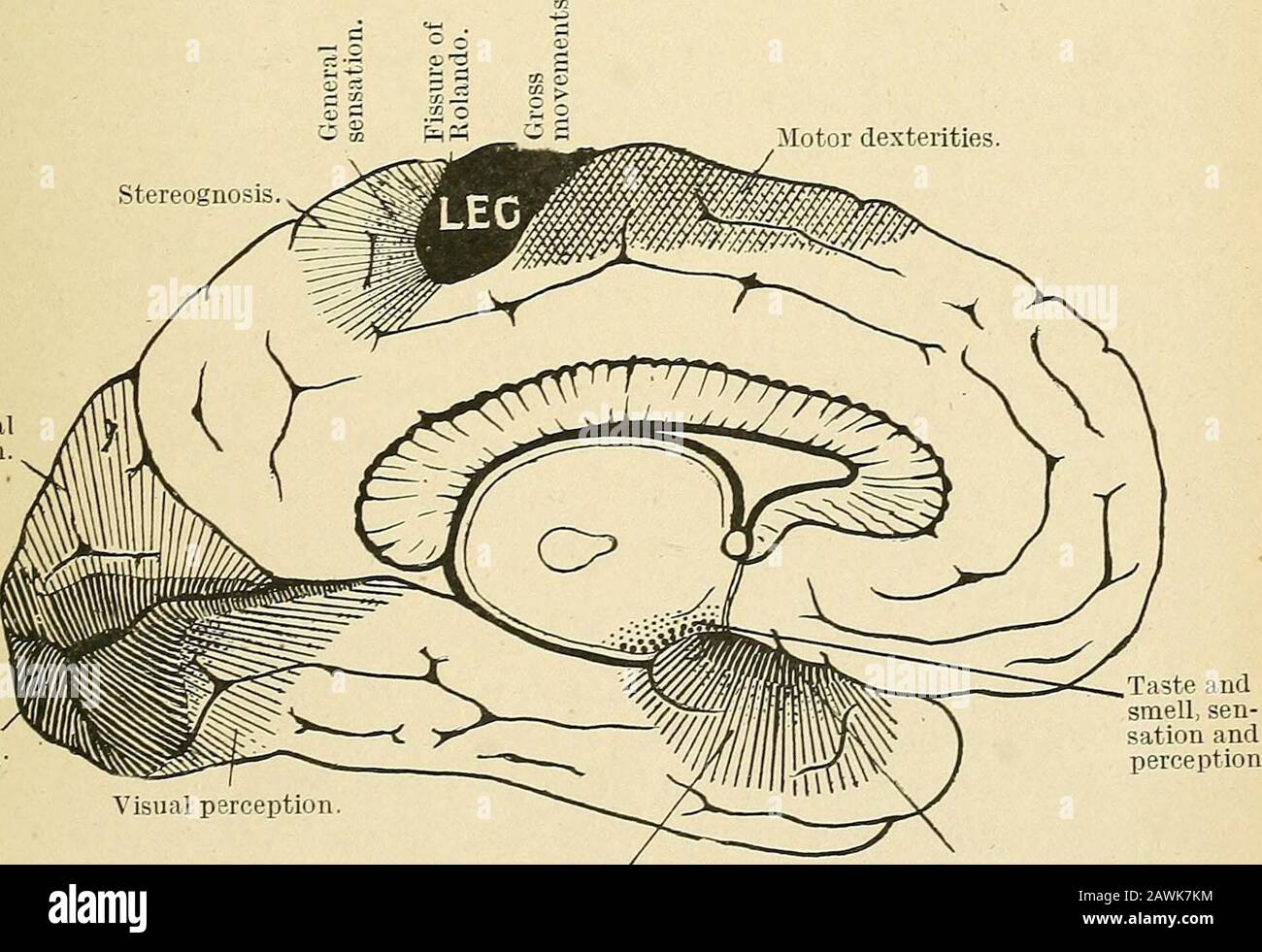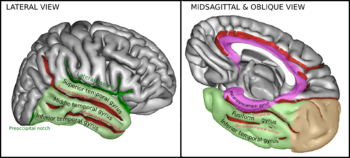

( Frequency, when referring to sound waves, is related to pitch. What this means is that different areas of the auditory cortex are involved in processing different sound frequencies. Cells in the primary region of the auditory cortex (and in some parts of the non-primary regions as well) are arranged so they form what is known as a tonotopic map.

The auditory cortex primarily receives auditory information from a nucleus in the thalamus called the medial geniculate nucleus, which is where all incoming information about hearing is sent before it is processed by the cerebral cortex. For example, damage (e.g., like that caused by a stroke) might cause deficits in the ability to detect changes in pitch, localize sounds in space, or understand speech. Damage to the auditory cortex can disrupt various facets of auditory perception. The auditory cortex is also thought to be involved in higher-level auditory processing, such as recognizing aspects of sound that are specific to speech. But it is also important in various other aspects of sound processing, like determining where in space a sound originates from as well as identifying what might be producing the sound. It is thought to be integral to our perception of the fundamental aspects of an auditory stimulus, like the pitch of the sound. The auditory cortex plays a critical role in our ability to perceive sound. What is the auditory cortex and what does it do? The demarcations of the auditory cortex in general, however, are imprecise. These neighboring areas are mostly buried within the lateral sulcus as well, but may extend out to the superior temporal gyrus. The region adjacent to the core is often referred to as the belt region, and surrounding that is an area often called the parabelt region. For example, in some individuals the primary auditory cortex seems to occupy one Heschl’s gyrus, while in others it may extend past that gyrus into a neighboring sulcus (or beyond). The precise location of the primary region in humans is variable, however, as is the arrangement of Heschl’s gyri (some people have one of these gyri, while others have two or three). The primary auditory cortex in humans is hidden within the lateral sulcus on a collection of gyri known as Heschl’s gyri (aka the transverse temporal gyri).

There is general agreement, however, that the auditory cortex consists of a primary area-which is often referred to as the core region-as well as multiple non-primary areas. The auditory cortex can be subdivided into multiple regions, although there is still some question about the most appropriate way to create those subdivisions in the human brain. Some auditory cortex is visible on the external surface the brain, however, as it extends to a gyrus called the superior temporal gyrus. Most of it is hidden from view, buried deep within a fissure called the lateral sulcus. The auditory cortex is found in the temporal lobe. A coronal section of the left hemisphere, showing the primary auditory cortex (red) as well as surrounding auditory regions (blue and purple).


 0 kommentar(er)
0 kommentar(er)
